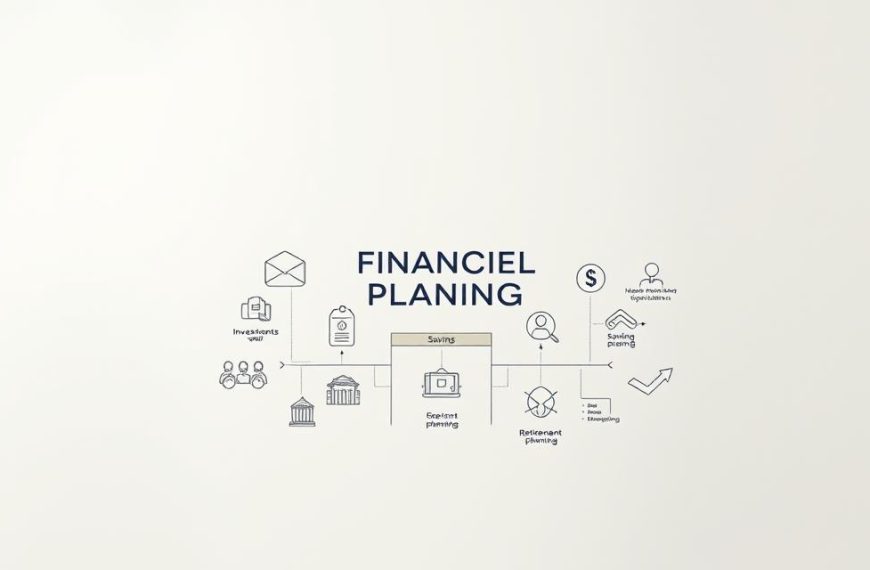Protecting your financial future is a multifaceted endeavour that involves more than just saving and investing. Insurance plays a pivotal role in safeguarding your assets against unforeseen events that could potentially destabilise your financial stability.
By integrating insurance into your comprehensive financial plan, you can mitigate risks and ensure a more secure financial future. This strategic approach not only helps in preserving your wealth but also complements your investment efforts, providing a balanced framework for achieving your long-term financial goals.
Understanding the interplay between insurance and other aspects of financial planning is crucial. It enables individuals to make informed decisions, avoiding potential pitfalls and creating a robust financial strategy tailored to their specific needs and circumstances.
The Protective Role of Insurance in Financial Planning
Insurance plays a vital role in financial planning by providing a protective layer against unforeseen risks. It is designed to preserve your existing quality of life and provide financial security for your dependents.
Insurance as a Financial Safety Net
True insurance products are fundamentally designed not as vehicles for investment, but as crucial safety nets. They operate on the principle of risk management—mitigating the financial impact of adverse events that could otherwise alter your life’s trajectory dramatically.
Insurance serves primarily as a protective mechanism rather than a wealth-generating tool, focusing on preserving what you’ve already accumulated rather than growing new assets.
Risk Management vs Wealth Building
While investment products aim to grow wealth with an acceptance of risk, genuine insurance stands as a bulwark against risk, offering a buffer that helps maintain stability in turbulent times.
A balanced financial plan requires both elements—insurance to manage downside risks and investments to create upside potential. The risk management approach of insurance complements the wealth-building approach of investments, creating a more resilient overall financial strategy.
- Financial planning encompasses two distinct but complementary approaches: risk management through insurance and wealth building through investments.
- Understanding the clear distinction between insurance products and investment vehicles is crucial for effective financial planning.
- A balanced financial plan requires both insurance to manage risks and investments to create potential for growth.
How Does Insurance Factor in Financial Planning: A Comprehensive Overview
Insurance plays a pivotal role in financial planning, serving as a cornerstone for securing one’s financial future. As an advisor, I caution my clients against conflating insurance with investment. The primary purpose of insurance should always be protection.
Insurance as a Cornerstone of Financial Security
Effective financial planning requires finding the optimal balance between protection through insurance and growth through investments. Many financial products attempt to combine insurance and investment features, but these hybrid products often compromise on either the protection aspect, the investment returns, or both.
Balancing Protection and Investment Goals
A clear separation between insurance products (for protection) and investment vehicles (for growth) typically results in better outcomes for both objectives. Key considerations include:
- The appropriate allocation between insurance and investments will vary based on individual circumstances.
- Regular reassessment of this balance is necessary as financial goals evolve throughout different life stages.
By maintaining a balanced financial plan, individuals can ensure they are adequately protected while also working towards their investment goals. This approach enables a more tailored strategy, aligning with the client’s overall financial planning objectives.
Essential Types of Insurance for Complete Financial Protection
Comprehensive financial protection is contingent upon having the right types of insurance in place. Insurance plays a pivotal role in safeguarding one’s financial future against unforeseen events.
Life Insurance: Securing Your Family’s Future
Life insurance provides a financial safety net for your loved ones in the event of your passing. It ensures that they are protected from financial hardship, allowing them to maintain their standard of living.
Health and Disability Insurance: Protecting Your Income
Health insurance covers medical expenses, while disability insurance replaces your income if you become unable to work. Both are crucial for maintaining financial stability in the face of health-related challenges.
| Type of Insurance | Purpose | Benefits |
|---|---|---|
| Life Insurance | Provides financial support to dependents upon the policyholder’s death | Ensures dependents’ financial stability |
| Health Insurance | Covers medical expenses | Reduces financial burden of healthcare costs |
| Disability Insurance | Replaces income if the policyholder becomes disabled | Maintains financial stability during disability |
Property Insurance: Safeguarding Your Assets
Property insurance protects your assets, such as your home and business, against damage or loss. This type of insurance is essential for safeguarding your financial investments.
Liability and Long-term Care Insurance: Additional Protection Layers
Liability insurance shields you from financial loss if you’re found legally responsible for damages or injuries to others. Long-term care insurance covers the costs associated with long-term care, such as nursing home or in-home care services. Both provide additional layers of protection against potentially catastrophic financial exposures.
Integrating Insurance into Your Financial Plan
Effective financial planning involves integrating insurance products to mitigate potential risks and protect your assets. This integration ensures that your financial plan is robust and capable of withstanding unforeseen events.
Assessing Your Insurance Needs
To integrate insurance effectively, you must first assess your insurance needs. This involves understanding your personal circumstances, financial goals, and the types of risks you face. Consulting an independent financial advisor can provide unbiased guidance tailored to your specific situation. It’s crucial to read the fine print of any insurance policy, comparing different insurance products to find the best fit for your needs without unnecessary extras.
Creating a Balanced Insurance Portfolio
A balanced insurance portfolio incorporates multiple types of coverage to address various risk categories without overlap or significant gaps. The right mix of insurance policies depends on individual circumstances, with certain types being essential for everyone, such as health insurance. Regular reviews of your insurance portfolio ensure it remains aligned with your changing needs and financial situation. This approach helps achieve cost-effectiveness by balancing premium costs with coverage benefits.
- A balanced insurance portfolio addresses various risk categories without unnecessary overlap.
- The appropriate mix of insurance policies depends on individual circumstances.
- Cost-effectiveness involves balancing premium costs with coverage benefits.
Common Insurance Planning Mistakes to Avoid
When it comes to financial planning, insurance plays a crucial role, but many individuals make critical mistakes that can have long-lasting consequences. A well-informed approach to insurance planning can help mitigate these risks and ensure a more secure financial future.
Confusing Insurance with Investment Products
One of the most significant mistakes individuals make is confusing insurance products with investment vehicles. While certain insurance policies, such as whole life insurance, do have an investment component, their primary purpose is to provide financial protection against unforeseen events. It’s essential to understand the difference between insurance and investment products to avoid overpaying for coverage or missing out on potential investment opportunities.
Inadequate Coverage and Other Pitfalls
Inadequate coverage is another common pitfall in insurance planning. This can leave individuals vulnerable to financial hardship despite having insurance policies in place. Other mistakes include underestimating potential risks, failing to update coverage following major life events, and neglecting to understand policy exclusions and limitations. Key risks to consider include:
- Inadequate coverage for liability exposure, disability income needs, and long-term care requirements.
- Over-insuring in some areas while under-insuring in others, leading to an imbalanced protection strategy.
- Failing to review and adjust insurance coverage in response to significant life changes, such as marriage, the birth of children, or retirement.
Conclusion: Securing Your Financial Future Through Proper Insurance Planning
To summarise, incorporating insurance into your financial plan is essential for safeguarding your financial health. By considering genuine insurance products focused on protection, you can create a safety net that shields you and your family from life’s uncertainties. Working with financial advisors can help you develop a tailored protection strategy that addresses individual risks while complementing other aspects of your financial plan, including tax planning and savings.
A well-integrated insurance plan serves as a foundational element of financial security, providing protection against unpredictable events. Regular reviews and adjustments to your coverage ensure that your protection remains aligned with your evolving needs and financial circumstances. By viewing insurance as an investment in financial well-being rather than an expense, you can achieve greater peace of mind and confidence in your financial planning decisions.











